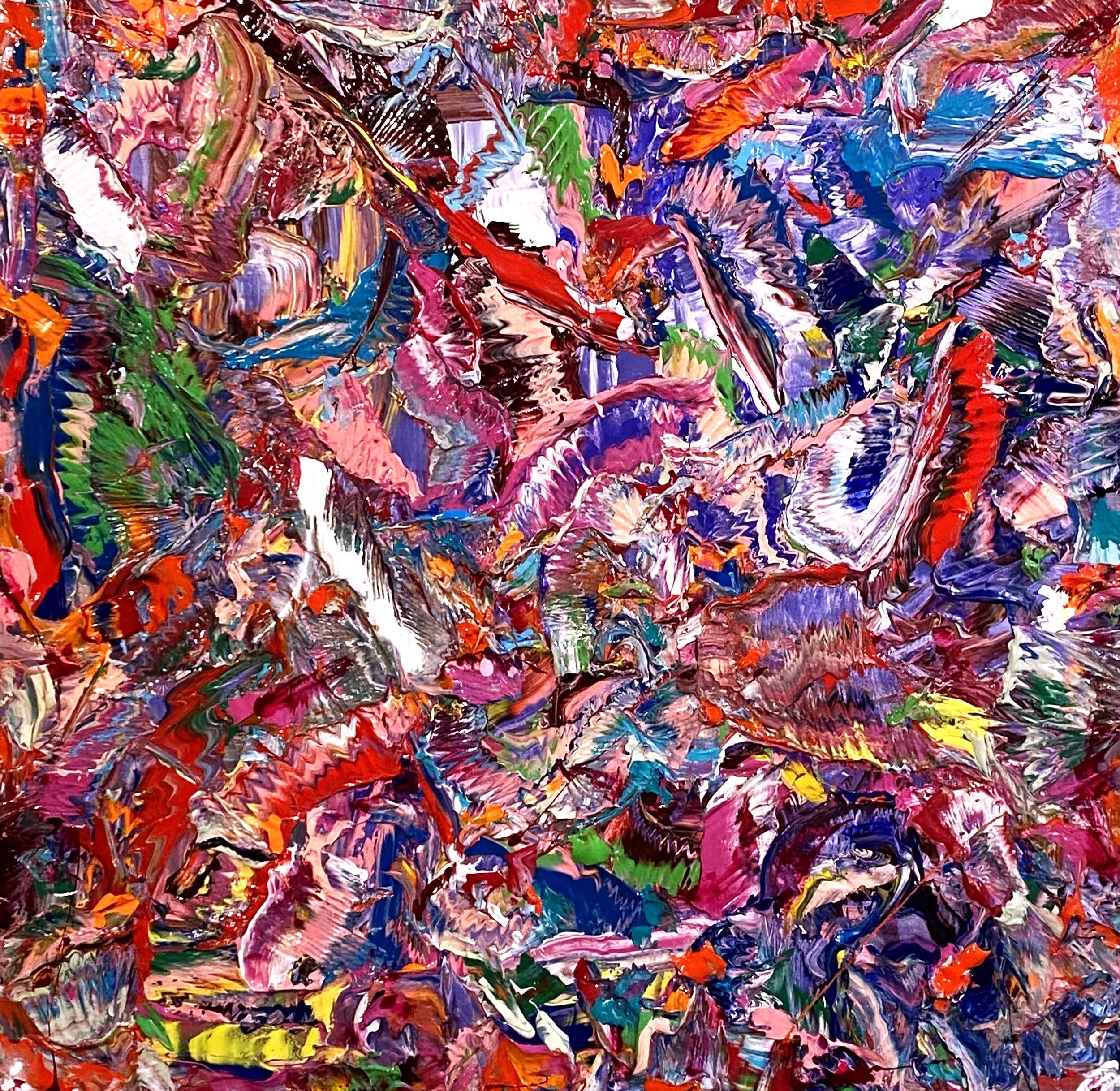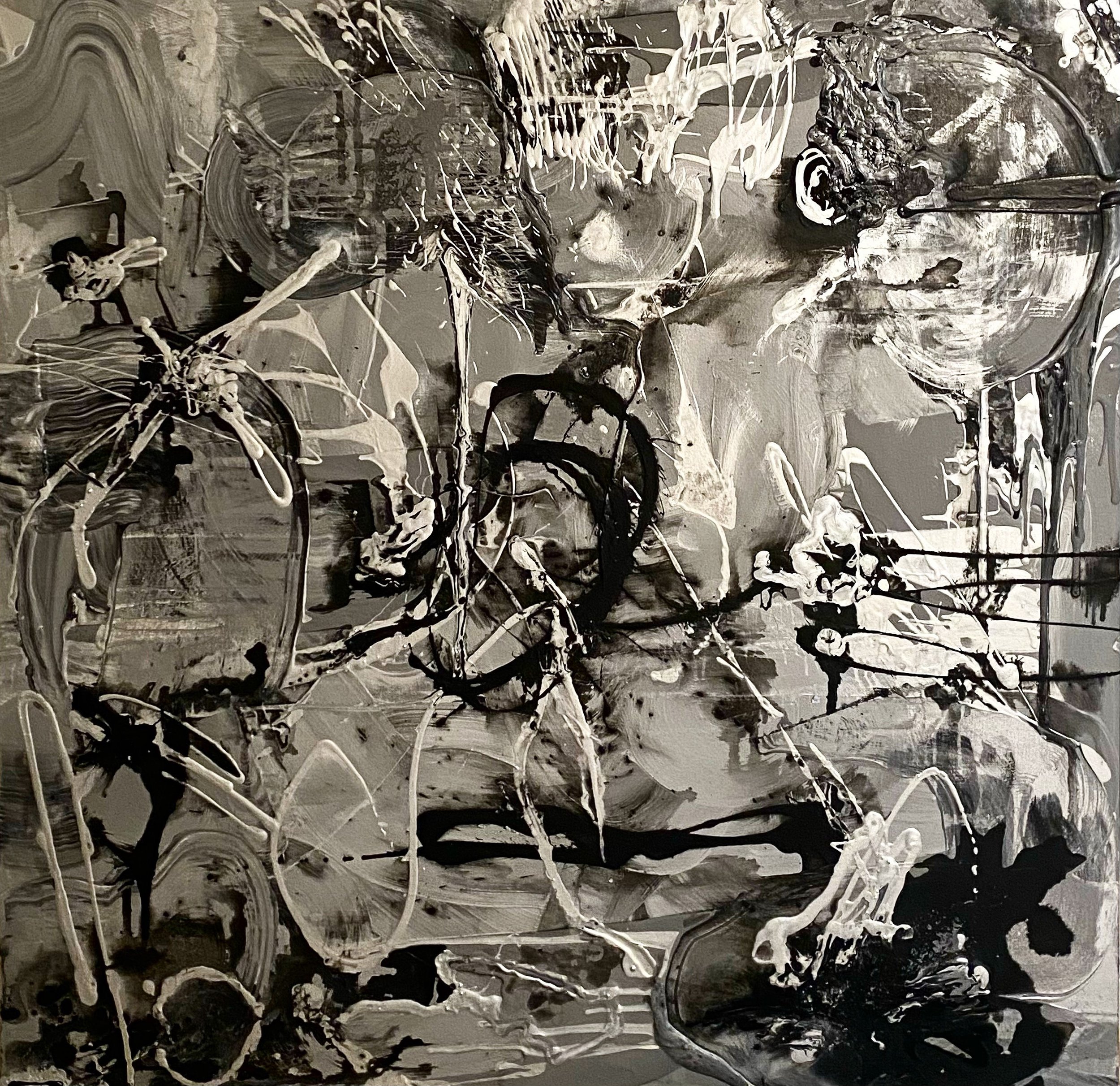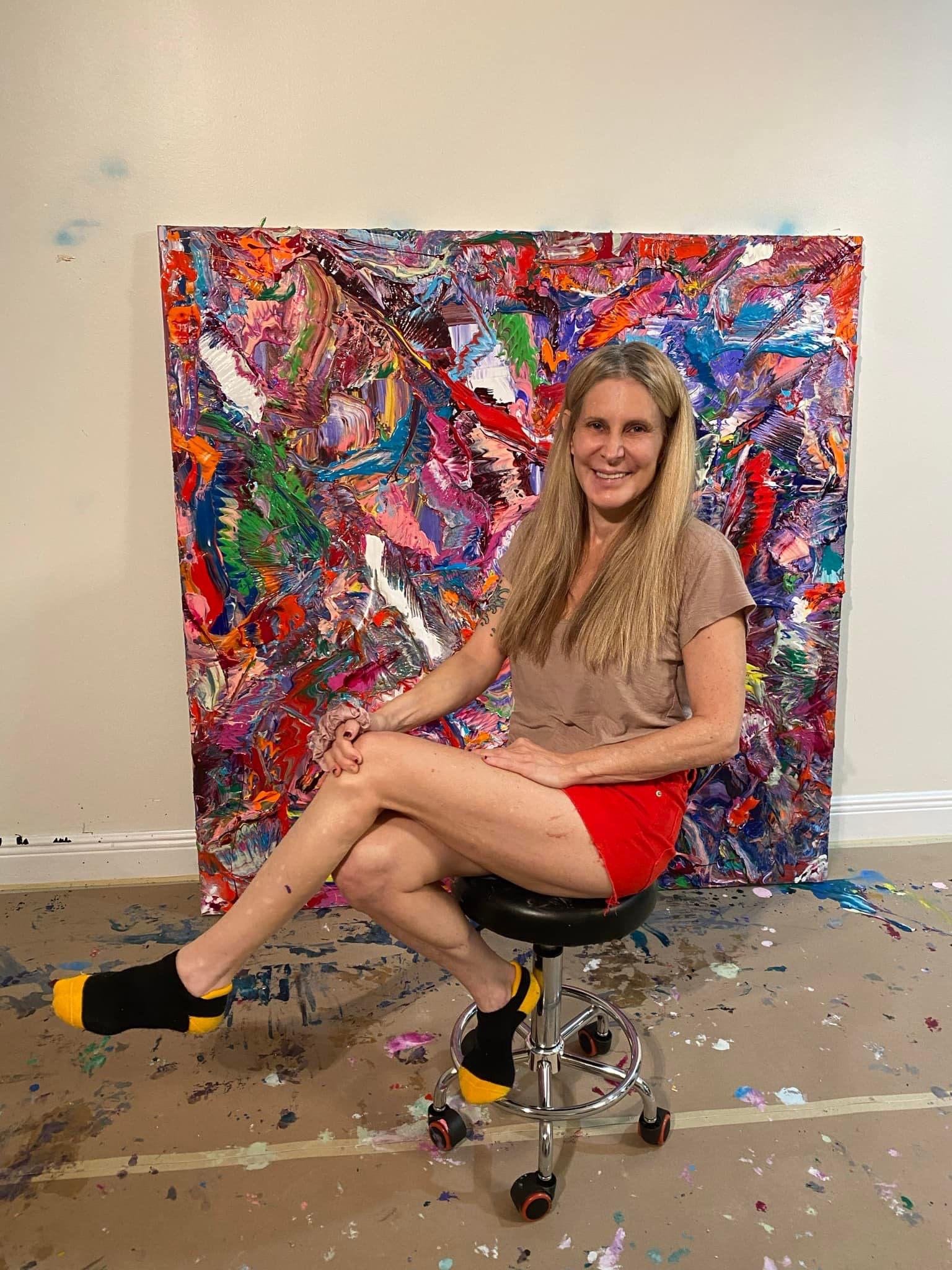Interview
Lisa Beth Older
NYC, Chelsea artist Lisa Beth Older is an abstract action style painter born in Hartford, Connecticut.
She’s been exhibiting and selling art for two decades, and her art can be found in three Museums, with two Presidential families, and in numerous private prominent art collections all around the world.
Lisa joined the LA Comedy Store as an MC and by studying actors such as Robin Williams, Jay Leno, Jerry Seinfeld, and Andy Kaufman, the moment finally came when she got to perform with some of them. She became a regular act at the Comedy Store Belly Room, and got to work with the iconic Andy Kaufman in his famous wrestling act.
Later, Lisa went on tour, arrived in New York City and joined the Comic Strip, Rodney Dangerfield and Catch a Rising Star.
The energy, excessiveness, and cultures of New York City are reflected in her art, that is visceral and rather tactile.
What is your background and how did you start your journey in the art world?
“I minored in creative arts at UCLA, but I’m primarily a self-taught artist. In the ’80s, I lived for four years in the East Village on Avenue A, where I trained with my mentor, abstract artist Fredda Mekul. I was an integral part of the East Village art scene, throwing art parties which drew regular crowds of creative people. One night, Joey Ramone stumbled over the threshold to become a lifelong friend.
My mother influenced my art journey. She liked to paint but died of breast cancer when I was only six years old. I carried a lot of pain growing up, and at the age of sixteen, I moved to California and ended up living in a teepee up in the mountains, painting, writing poetry, and playing guitar. Pain felt natural to me, but art was my ultimate medicine.”
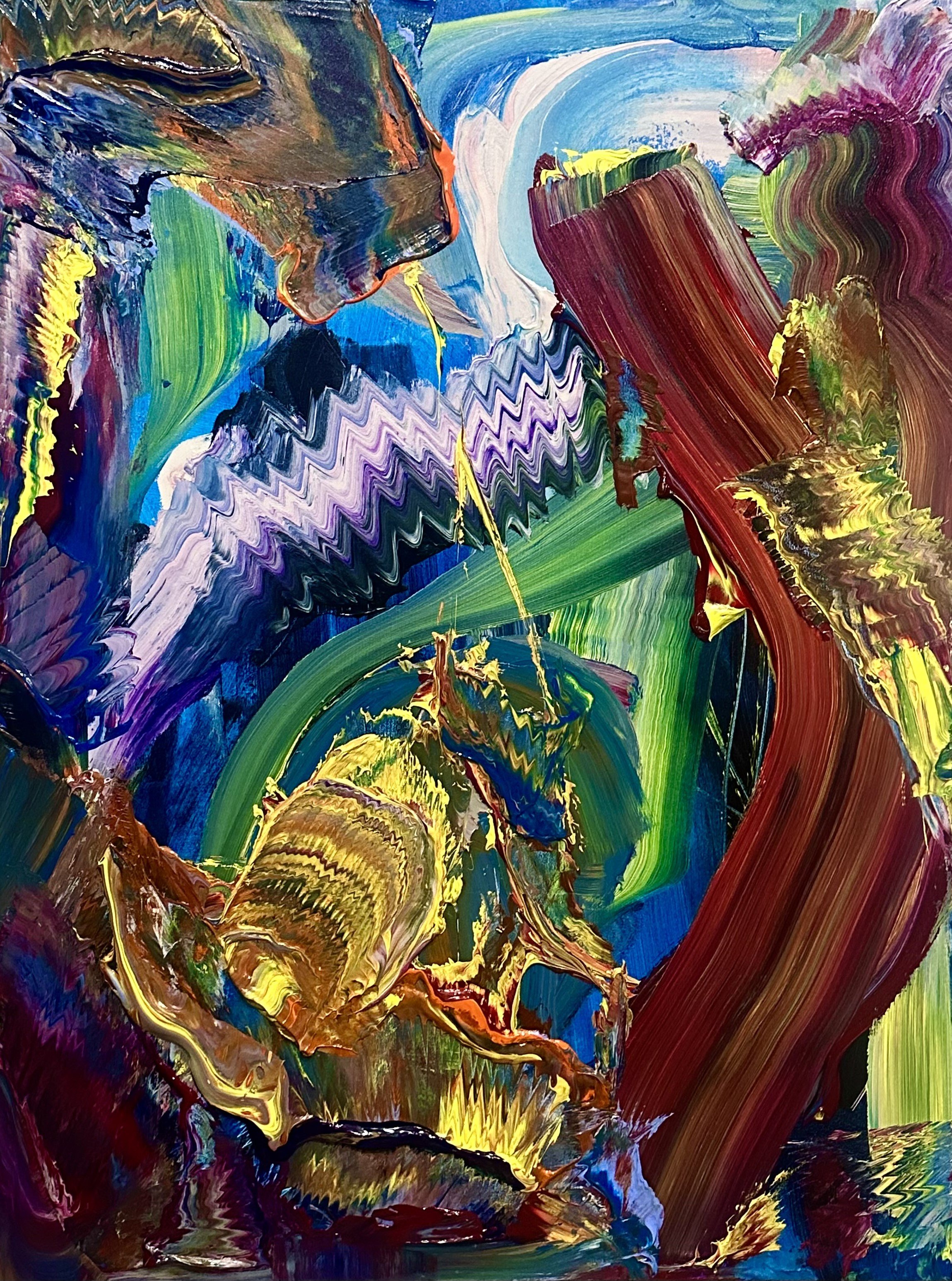
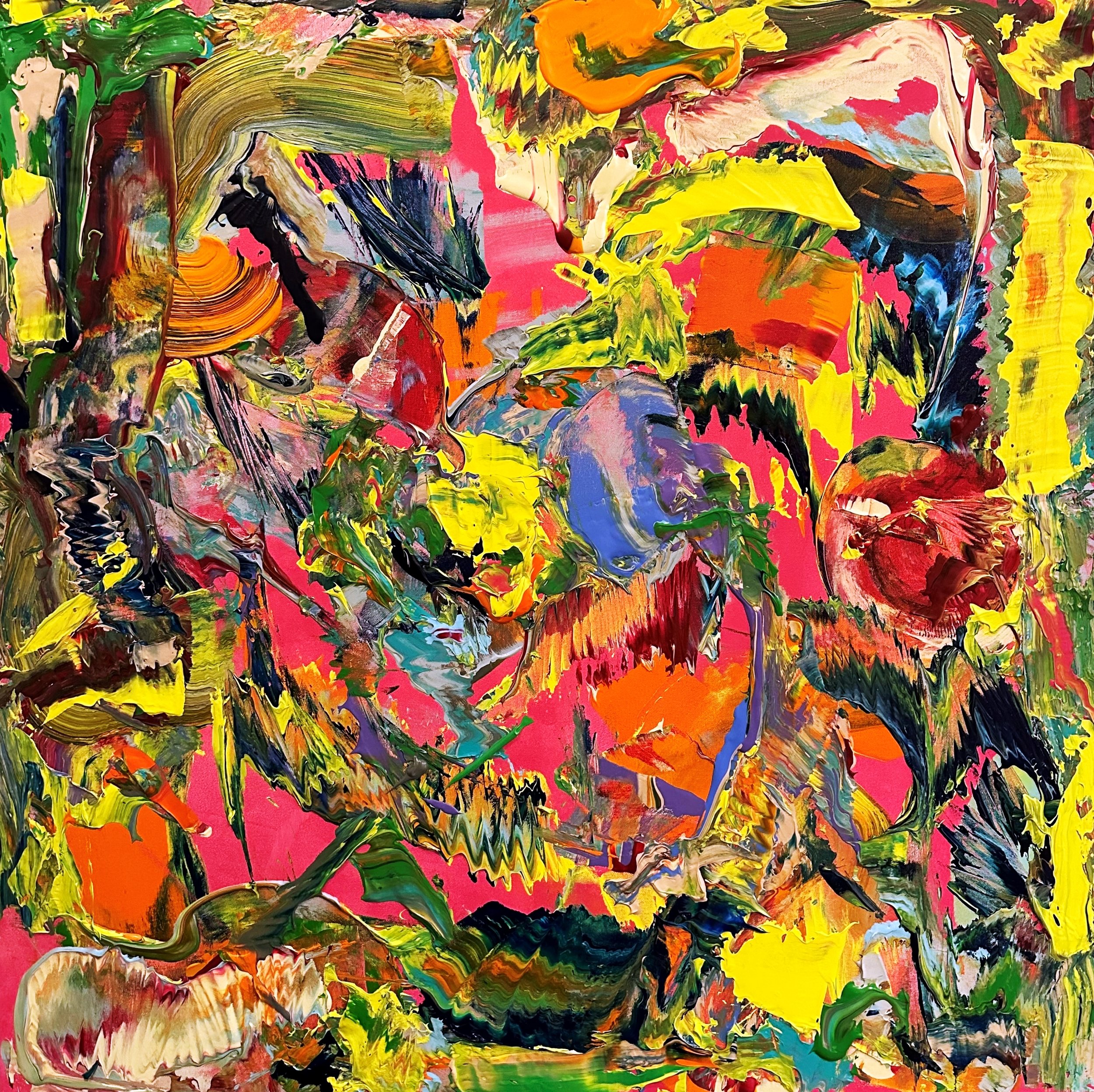
What inspires you?
“I’m inspired by life and everything we see and feel around us. I believe that as you go through life, you come across different teachers. Some of them teach you survival skills, some life lessons, and some even inspire you. If you keep your eyes and ears open, you’ll find that all these lessons are there to guide you through life.”
What themes do you pursue? Is there an underlying message in your work?
“Through my art, I hope to stimulate the viewer’s mind, taking them on a journey and evoking an emotional and physical response. Like life, some inner parts of ourselves are unconsciously left exposed. We can’t hide everything. And so it is the individual viewer’s mind that completes the image of who I am as an artist, and what the painting managed to capture of it.
It’s a reflection of the complexity of evolving as the work evolves, unwittingly in a state of abandonment, showing the emotional stages I go through as I paint to completion.”
“When it comes to painting, I’ve found that what works best for me is to learn by doing. The more I practice, the better I get. It’s not about the destination; it’s all about the journey.”
Ultimately, you can’t be afraid of taking risks. It’s when you venture into the unknown that you stand to discover something new.”
How would you describe your work?
“I’m known for my signature style Bend & Blend, my fearlessness with colors, energy, texture, and my action style painting. My art is visceral and rather tactile. My work captures some of the influence that living in New York City with all its cross cultures has had on me. This is reflected through the somewhat excessive use of layers upon layers of paint.”
Which artists influence you most?
“To my amazement, I’m often compared to artists like Willem de Kooning, Jackson Pollock, and Lee Krasner, for which I feel honored. These artists, for whom I have immense respect, were the pioneers of the American Abstract Expressionism art movement.”
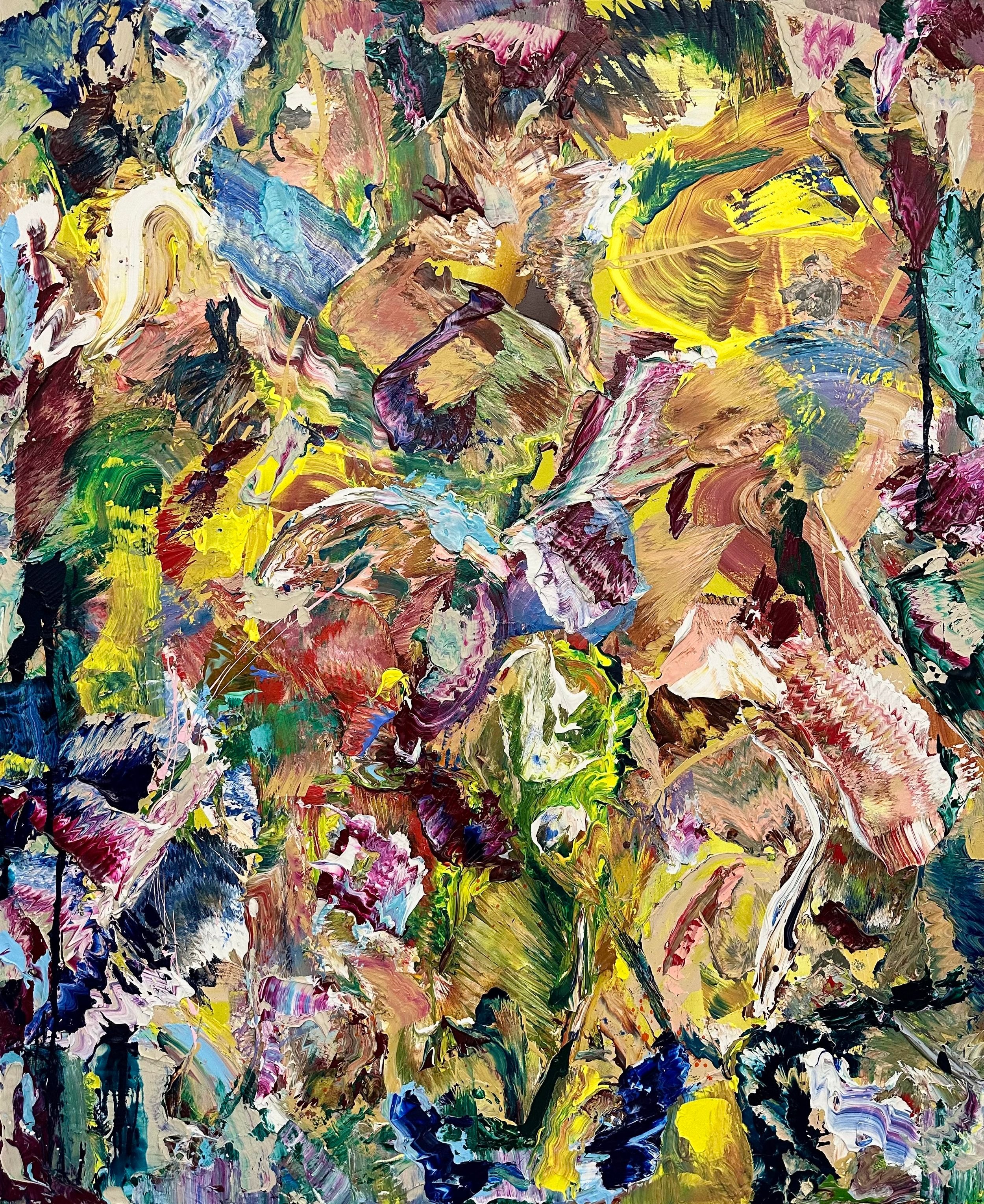
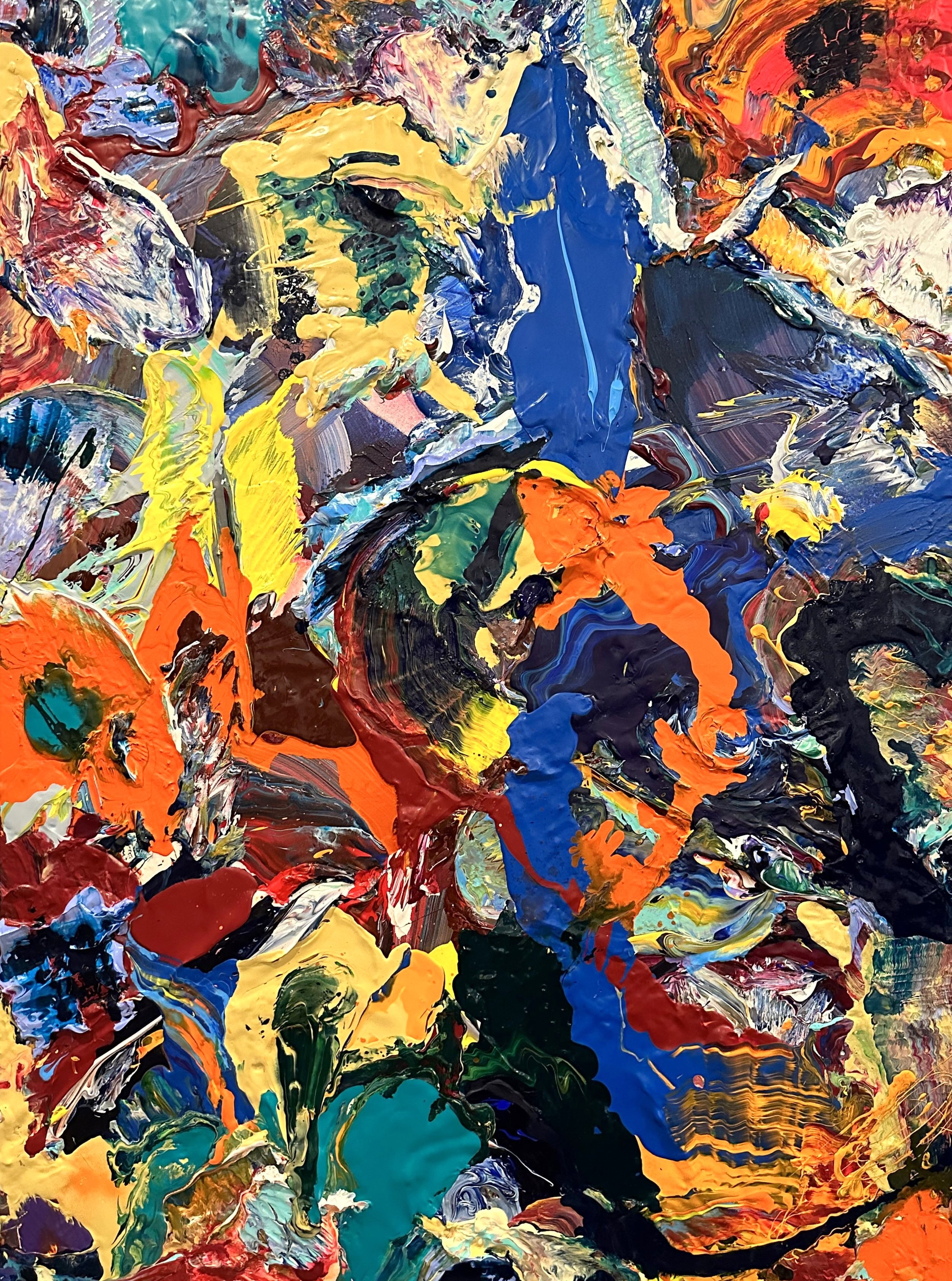
What is your creative process like?
“I work mostly from the subconscious mind. For me, stopping the creative process is the most difficult part of creation. But every now and then, a piece of work speaks to me and tells me to get out of its way; telling me there is nothing more that can be done, and I try to listen. I’m just an imperfect tool, and skill and thought must inevitably play its small part in the process. But more importantly, each one of us is a life force, and that force is so fierce that when you tap into that realm, you can paint past the perfection zone and create real art.
My practice leans towards expression over contemplation, but it’s not the only way. To be able to get three-dimensional relief effects, I use knives, brushes, and handmade tools. In order to invite the viewer to imagine hidden unseen parts, I layer the painting, leaving hints of vestiges. I apply a bit of a scientific approach to bending and blending paint. When you blend or mix paint, you need to have an understanding of the chemical process — what paint works well together and what colors mixes well without muddying it up. To be able to bend and mold the paint into the desired result, it has to have the right consistency. If it’s too thin and runny, you need to add more paint. If it’s too fresh or too dry, it becomes hard to mold. You need to figure out the right molding temperature.”
What is an artist’s role in society and how do you see that evolving?
“Artists inspire, engage, evoke emotions, beautify, and spread happiness. They stimulate intellectual debate, challenging the powers that be. Art is culture. Art is freedom to express. Art is everything.”
Have you had any noteworthy exhibitions you'd like to share?
“I've been exhibiting art for more than two decades.
You can see some of my work published on amNY here.”
Website: www.lisabetholder.com
Instagram:@nycartistlisabeth


